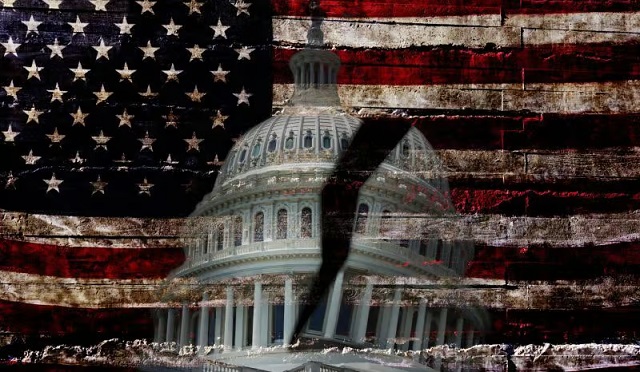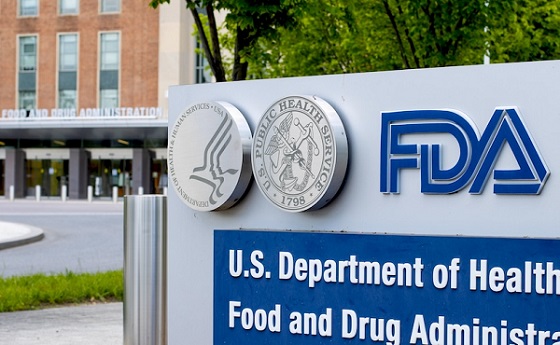Brownstone Institute
Is Free Speech a Relic in America?

From the Brownstone Institute
BY
A CISA advisory committee last year issued a report that “broadened” what it targeted to include “the spread of false and misleading information because it poses a significant risk to critical function, like elections, public health, financial services and emergency responses.” Thus, any idea that government officials label as “misleading” is a “significant risk” that can be suppressed.
Is the First Amendment becoming a historic relic? On July 4, 2023, federal judge Terry Doughty condemned the Biden administration for potentially “the most massive attack against free speech in United States history.” That verdict was ratified by a federal appeals court decision in September 2023 that concluded that Biden administration “officials have engaged in a broad pressure campaign designed to coerce social-media companies into suppressing speakers, viewpoints, and content disfavored by the government.”
In earlier times in America, such policies would have faced sweeping condemnation from across the political spectrum. But major media outlets like the Washington Post have rushed to the barricades to defend the Biden war on “misinformation.” Almost half of Democrats surveyed in September 2023 affirmed that free speech should be legal “only under certain circumstances.” Fifty-five percent of American adults support government suppression of “false information” — even though only 20 percent trust the government.
Biden’s War on Free Speech
The broad support for federal censorship is perplexing considering that courts have vividly laid out the government’s First Amendment violations. Doughty delivered 155 pages of damning details of federal browbeating, jawboning, and coercion of social-media companies. Doughty ruled that federal agencies and the White House “engaged in coercion of social media companies” to delete Americans’ comments on Afghanistan, Ukraine, election procedures, and other subjects. He issued an injunction blocking the feds from “encouraging, pressuring, or inducing in any manner the removal, deletion, suppression, or reduction of content containing protected free speech.”
Censors reigned from the start of the Biden era. Barely two weeks after Biden’s inauguration, White House Digital Director Rob Flaherty demanded that Twitter “immediately” remove a parody account of Biden’s relatives. Twitter officials suspended the account within 45 minutes but complained they were already “bombarded” by White House censorship requests at that point.
Biden White House officials ordered Facebook to delete humorous memes, including a parody of a future television ad: “Did you or a loved one take the COVID vaccine? You may be entitled….” The White House continually denounced Facebook for failing to suppress more posts and videos that could inspire “vaccine hesitancy” — even if the posts were true. Facebook decided that the word “liberty” was too hazardous in the Biden era; to placate the White House, the company suppressed posts “discussing the choice to vaccinate in terms of personal or civil liberties.”
Flaherty was still unsatisfied and raged at Facebook officials in a July 15, 2021, email: “Are you guys f–king serious?” The following day, President Biden accused social-media companies of “killing people” by failing to suppress all criticism of COVID vaccines.
Federal Censorship
Censorship multiplied thanks to an epic bureaucratic bait-and-switch. After allegations of Russian interference in the 2016 election, the Cybersecurity and Infrastructure Security Act was created to protect against foreign meddling. Prior to Biden taking office, CISA had a “Countering Foreign Influence Task Force.” In 2021, that was renamed the “Mis-, Dis- and Mal-information Team (‘MDM Team’).”
But almost all the targets of federal censorship during the Biden era have been Americans. Federal censorship tainted the 2020 and 2022 elections, spurring the suppression of millions of social-media posts (almost all from conservatives). During the 2020 election, CISA targeted for suppression assertions such as “mail-in voting is insecure” — despite the long history of absentee ballot fraud.
CISA aims to control Americans’ minds: A CISA advisory committee last year issued a report that “broadened” what it targeted to include “the spread of false and misleading information because it poses a significant risk to critical function, like elections, public health, financial services and emergency responses.” Thus, any idea that government officials label as “misleading” is a “significant risk” that can be suppressed.
Where did CISA find the absolute truths it used to censor American citizens? CISA simply asked government officials and “apparently always assumed the government official was a reliable source,” the court decision noted. Any assertion by officialdom was close enough to a Delphic oracle to use to “debunk postings” by private citizens. Judge Doughty observed that the free-speech clause was enacted to prohibit agencies like CISA from picking “what is true and what is false.”
Covid-Inspired Censorship
“Government = truth” is the premise for the Biden censorship regime. In June 2022, Flaherty declared that he “wanted to monitor Facebook’s suppression of COVID-19 misinformation ‘as we start to ramp up [vaccines for children under the age of 5].’” The FDA had almost zero safety data on COVID vaccines for infants and toddlers. But Biden announced the vaccines were safe for those target groups, so any assertion to the contrary automatically became false or misleading.
Biden policymakers presumed that Americans are idiots who believe whatever they see on Facebook. In an April 5, 2021, phone call with Facebook staffers, White House Strategy Communication chief Courtney Rowe said, “If someone in rural Arkansas sees something on FB [Facebook], it’s the truth.”
In the same call, a Facebook official mentioned nose bleeds as an example of a feared COVID vaccine side effect. Flaherty wanted Facebook to intervene in purportedly private conversations on vaccines and “Direct them to CDC.” A Facebook employee told Flaherty that “an immediate generated message about nose bleeds might give users ‘the Big Brother feel.’” At least the Biden White House didn’t compel Facebook to send form notices every 90 seconds to any private discussion on COVID: “The Department of Homeland Security wishes to remind you that there is no surveillance. Have a nice day.” Flaherty also called for Facebook to crack down on WhatsApp exchanges (private messages) between individuals.
Federal agencies responded to legal challenges by portraying themselves as the same “pitiful, helpless giants” that President Richard Nixon invoked to describe the US government when he started bombing Cambodia. Judge Doughty wrote that federal agencies “blame the Russians, COVID-19 and capitalism for any suppression of free speech by social-media companies.” But that defense fails the laugh test.
Federal agencies pirouetted as a “Ministry of Truth,” according to the court rulings, strong-arming Twitter to arbitrarily suspend 400,000 accounts, including journalists and diplomats.
The Biden administration rushed to sway the appeals court to postpone enforcement of the injunction and then sought to redefine all its closed-door shenanigans as public service. In its briefs to the court, the Justice Department declared, “There is a categorical, well-settled distinction between persuasion and coercion,” and castigated Judge Doughty for having “equated legitimate efforts at persuasion with illicit efforts to coerce.”
Biden’s Justice Department denied that federal agencies bullied social-media companies to suppress any information. Instead, there were simply requests for “content moderation,” especially regarding COVID. Actually, there were tens of thousands of “requests” that resulted in the suppression of millions of posts and comments by Americans.
Team Biden champions a “no corpse, no delicta” definition of censorship. Since federal SWAT teams did not assail the headquarters of social-media firms, the feds are blameless. Or, as Justice Department lawyer Daniel Tenny told the judges, “There was a back and forth. Sometimes it was more friendly, sometimes people got more testy. There were circumstances in which everyone saw eye to eye, there were circumstances in which they disagreed.”
It’s irrelevant that President Joe Biden publicly accused social-media companies of murder for not censoring far more material and that Biden appointees publicly threatened to destroy the companies via legislation or prosecution. Nope: It was just neighborly discussions between good folks.
The Courts Strike Back
At the appeals court hearing, Judge Don Willett, one of the most principled and penetrating judges in the nation, had no problem with federal agencies publicly criticizing what they judged false or dangerous ideas. But that wasn’t how Team Biden compelled submission: “Here you have government in secret, in private, out of the public eye, relying on … subtle strong-arming and veiled or not-so-veiled threats.” Willett vivified how the feds played the game: “That’s a really nice social-media platform you’ve got there, it would be a shame if something happened to it.”
Judge Jennifer Elrod compared the Biden censorship regime to the Mafia: “We see with the mob … they have these ongoing relationships. They never actually say, ‘Go do this or else you’re going to have this consequence.’ But everybody just knows.”
Yet the Biden administration was supposedly innocent because the feds never explicitly spelled out “or else,” according to the Justice Department lawyer. This is on par with redefining armed robbery as a consensual activity unless the robber specifically points his gun at the victim’s head. As economist Joseph Schumpeter aptly observed, “Power wins, not by being used, but by being there.”
In its September decision, the appeals court concluded that the White House, FBI, Centers for Disease Control and Prevention (CDC), and the US Surgeon General’s office trampled the First Amendment by coercing social media companies and likely “had the intended result of suppressing millions of protected free speech postings by American citizens.”
The court unanimously declared that federal
officials made express threats…. But, beyond express threats, there was always [italic in original] an “unspoken or else.” The officials made clear that the platforms would [italic in original] suffer adverse consequences if they failed to comply, through express or implied threats, and thus the requests were not optional.
The appeals court also took a “real-world” view of the nation’s most feared law enforcement agency: “Although the FBI’s communications did not plainly reference adverse consequences, an actor need not express a threat aloud so long as, given the circumstances, the message intimates that some form of punishment will follow noncompliance.” The federal appeals court upheld part of the injunction while excluding some federal agencies from anticensorship restrictions.
The Biden administration quickly appealed the partial injunction to the Supreme Court, telling the court: “Of course, the government cannot punish people for expressing different views…. But there is a fundamental distinction between persuasion and coercion. And courts must take care to maintain that distinction because of the drastic consequences resulting from a finding of coercion.”
The Biden brief bewailed that the appeals court found that “officials from the White House, the Surgeon General’s office, and the FBI coerced social-media platforms to remove content despite the absence of even a single instance in which an official paired a request to remove content with a threat of adverse action.” But both the federal district court and the appeals court decisions offered plenty of examples of federal threats.
The New Civil Liberties Alliance, one of the plaintiffs, scoffed: “The Government argues that the injunction interferes with the government’s ability to speak. The Government has a wide latitude to speak on matters of public concern, but it cannot stifle the protected speech of ordinary Americans.” And the injunction impedes federal officials from secretly coercing private companies to satisfy White House demands.
As the Biden administration pressured the Supreme Court, the anticensorship lawyers on September 25 secured an en banc rehearing of their case, which consists of a panel of all 17 active Fifth Circuit judges. The plaintiffs were especially concerned that the Cybersecurity and Infrastructure Security Act was excluded from the injunction. CISA and its array of federal censorship contractors have sowed far too much mischief in recent years. The appeals court modified the injunction to put a leash on CISA.
Censorship could cast the deciding vote in the 2024 presidential election. Judge Doughty issued his injunction in part because federal agencies “could use their power over millions of people to suppress alternative views or moderate content they do not agree with in the upcoming 2024 national election.”
Much of the mainstream media is horrified at the prospect of reduced federal censorship. The Washington Post article on Doughty’s decision fretted, “For more than a decade, the federal government has attempted to work with social media companies to address criminal activity, including child sexual abuse images and terrorism.” The Post did not mention the Biden crusade to banish cynicism from the Internet. Journalist Glenn Greenwald scoffed, “The most surreal fact of U.S. political life is that the leading advocates for unified state/corporate censorship are large media corporations.”
Fifty years ago, philosopher Hannah Arendt wrote of the “most essential political freedom, the right to unmanipulated factual information without which all freedom of opinion becomes a cruel hoax.” The battle over federal censorship will determine whether Americans can have more than a passing whiff of that political freedom. Ohio Attorney General Dave Yost joined the lawsuit against censorship and commented in September: “The federal government doesn’t get to play referee on the field of public discourse. If you let them decide what speech is OK, one day yours might not be.”
On October 20, the Supreme Court announced that it would rule on this case, with a decision expected within a few months. Stay tuned for plenty of legal fireworks and maybe even good news for freedom.
This article was originally published in the December 2023 edition of Future of Freedom.
Brownstone Institute
The Unmasking of Vaccine Science

From the Brownstone Institute
By
I recently purchased Aaron Siri’s new book Vaccines, Amen. As I flipped though the pages, I noticed a section devoted to his now-famous deposition of Dr Stanley Plotkin, the “godfather” of vaccines.
I’d seen viral clips circulating on social media, but I had never taken the time to read the full transcript — until now.
Siri’s interrogation was methodical and unflinching…a masterclass in extracting uncomfortable truths.
A Legal Showdown
In January 2018, Dr Stanley Plotkin, a towering figure in immunology and co-developer of the rubella vaccine, was deposed under oath in Pennsylvania by attorney Aaron Siri.
The case stemmed from a custody dispute in Michigan, where divorced parents disagreed over whether their daughter should be vaccinated. Plotkin had agreed to testify in support of vaccination on behalf of the father.
What followed over the next nine hours, captured in a 400-page transcript, was extraordinary.
Plotkin’s testimony revealed ethical blind spots, scientific hubris, and a troubling indifference to vaccine safety data.
He mocked religious objectors, defended experiments on mentally disabled children, and dismissed glaring weaknesses in vaccine surveillance systems.
A System Built on Conflicts
From the outset, Plotkin admitted to a web of industry entanglements.
He confirmed receiving payments from Merck, Sanofi, GSK, Pfizer, and several biotech firms. These were not occasional consultancies but long-standing financial relationships with the very manufacturers of the vaccines he promoted.
Plotkin appeared taken aback when Siri questioned his financial windfall from royalties on products like RotaTeq, and expressed surprise at the “tone” of the deposition.
Siri pressed on: “You didn’t anticipate that your financial dealings with those companies would be relevant?”
Plotkin replied: “I guess, no, I did not perceive that that was relevant to my opinion as to whether a child should receive vaccines.”
The man entrusted with shaping national vaccine policy had a direct financial stake in its expansion, yet he brushed it aside as irrelevant.
Contempt for Religious Dissent
Siri questioned Plotkin on his past statements, including one in which he described vaccine critics as “religious zealots who believe that the will of God includes death and disease.”
Siri asked whether he stood by that statement. Plotkin replied emphatically, “I absolutely do.”
Plotkin was not interested in ethical pluralism or accommodating divergent moral frameworks. For him, public health was a war, and religious objectors were the enemy.
He also admitted to using human foetal cells in vaccine production — specifically WI-38, a cell line derived from an aborted foetus at three months’ gestation.
Siri asked if Plotkin had authored papers involving dozens of abortions for tissue collection. Plotkin shrugged: “I don’t remember the exact number…but quite a few.”
Plotkin regarded this as a scientific necessity, though for many people — including Catholics and Orthodox Jews — it remains a profound moral concern.
Rather than acknowledging such sensitivities, Plotkin dismissed them outright, rejecting the idea that faith-based values should influence public health policy.
That kind of absolutism, where scientific aims override moral boundaries, has since drawn criticism from ethicists and public health leaders alike.
As NIH director Jay Bhattacharya later observed during his 2025 Senate confirmation hearing, such absolutism erodes trust.
“In public health, we need to make sure the products of science are ethically acceptable to everybody,” he said. “Having alternatives that are not ethically conflicted with foetal cell lines is not just an ethical issue — it’s a public health issue.”
Safety Assumed, Not Proven
When the discussion turned to safety, Siri asked, “Are you aware of any study that compares vaccinated children to completely unvaccinated children?”
Plotkin replied that he was “not aware of well-controlled studies.”
Asked why no placebo-controlled trials had been conducted on routine childhood vaccines such as hepatitis B, Plotkin said such trials would be “ethically difficult.”
That rationale, Siri noted, creates a scientific blind spot. If trials are deemed too unethical to conduct, then gold-standard safety data — the kind required for other pharmaceuticals — simply do not exist for the full childhood vaccine schedule.
Siri pointed to one example: Merck’s hepatitis B vaccine, administered to newborns. The company had only monitored participants for adverse events for five days after injection.
Plotkin didn’t dispute it. “Five days is certainly short for follow-up,” he admitted, but claimed that “most serious events” would occur within that time frame.
Siri challenged the idea that such a narrow window could capture meaningful safety data — especially when autoimmune or neurodevelopmental effects could take weeks or months to emerge.
Siri pushed on. He asked Plotkin if the DTaP and Tdap vaccines — for diphtheria, tetanus and pertussis — could cause autism.
“I feel confident they do not,” Plotkin replied.
But when shown the Institute of Medicine’s 2011 report, which found the evidence “inadequate to accept or reject” a causal link between DTaP and autism, Plotkin countered, “Yes, but the point is that there were no studies showing that it does cause autism.”
In that moment, Plotkin embraced a fallacy: treating the absence of evidence as evidence of absence.
“You’re making assumptions, Dr Plotkin,” Siri challenged. “It would be a bit premature to make the unequivocal, sweeping statement that vaccines do not cause autism, correct?”
Plotkin relented. “As a scientist, I would say that I do not have evidence one way or the other.”
The MMR
The deposition also exposed the fragile foundations of the measles, mumps, and rubella (MMR) vaccine.
When Siri asked for evidence of randomised, placebo-controlled trials conducted before MMR’s licensing, Plotkin pushed back: “To say that it hasn’t been tested is absolute nonsense,” he said, claiming it had been studied “extensively.”
Pressed to cite a specific trial, Plotkin couldn’t name one. Instead, he gestured to his own 1,800-page textbook: “You can find them in this book, if you wish.”
Siri replied that he wanted an actual peer-reviewed study, not a reference to Plotkin’s own book. “So you’re not willing to provide them?” he asked. “You want us to just take your word for it?”
Plotkin became visibly frustrated.
Eventually, he conceded there wasn’t a single randomised, placebo-controlled trial. “I don’t remember there being a control group for the studies, I’m recalling,” he said.
The exchange foreshadowed a broader shift in public discourse, highlighting long-standing concerns that some combination vaccines were effectively grandfathered into the schedule without adequate safety testing.
In September this year, President Trump called for the MMR vaccine to be broken up into three separate injections.
The proposal echoed a view that Andrew Wakefield had voiced decades earlier — namely, that combining all three viruses into a single shot might pose greater risk than spacing them out.
Wakefield was vilified and struck from the medical register. But now, that same question — once branded as dangerous misinformation — is set to be re-examined by the CDC’s new vaccine advisory committee, chaired by Martin Kulldorff.
The Aluminium Adjuvant Blind Spot
Siri next turned to aluminium adjuvants — the immune-activating agents used in many childhood vaccines.
When asked whether studies had compared animals injected with aluminium to those given saline, Plotkin conceded that research on their safety was limited.
Siri pressed further, asking if aluminium injected into the body could travel to the brain. Plotkin replied, “I have not seen such studies, no, or not read such studies.”
When presented with a series of papers showing that aluminium can migrate to the brain, Plotkin admitted he had not studied the issue himself, acknowledging that there were experiments “suggesting that that is possible.”
Asked whether aluminium might disrupt neurological development in children, Plotkin stated, “I’m not aware that there is evidence that aluminum disrupts the developmental processes in susceptible children.”
Taken together, these exchanges revealed a striking gap in the evidence base.
Compounds such as aluminium hydroxide and aluminium phosphate have been injected into babies for decades, yet no rigorous studies have ever evaluated their neurotoxicity against an inert placebo.
This issue returned to the spotlight in September 2025, when President Trump pledged to remove aluminium from vaccines, and world-leading researcher Dr Christopher Exley renewed calls for its complete reassessment.
A Broken Safety Net
Siri then turned to the reliability of the Vaccine Adverse Event Reporting System (VAERS) — the primary mechanism for collecting reports of vaccine-related injuries in the United States.
Did Plotkin believe most adverse events were captured in this database?
“I think…probably most are reported,” he replied.
But Siri showed him a government-commissioned study by Harvard Pilgrim, which found that fewer than 1% of vaccine adverse events are reported to VAERS.
“Yes,” Plotkin said, backtracking. “I don’t really put much faith into the VAERS system…”
Yet this is the same database officials routinely cite to claim that “vaccines are safe.”
Ironically, Plotkin himself recently co-authored a provocative editorial in the New England Journal of Medicine, conceding that vaccine safety monitoring remains grossly “inadequate.”
Experimenting on the Vulnerable
Perhaps the most chilling part of the deposition concerned Plotkin’s history of human experimentation.
“Have you ever used orphans to study an experimental vaccine?” Siri asked.
“Yes,” Plotkin replied.
“Have you ever used the mentally handicapped to study an experimental vaccine?” Siri asked.
“I don’t recollect…I wouldn’t deny that I may have done so,” Plotkin replied.
Siri cited a study conducted by Plotkin in which he had administered experimental rubella vaccines to institutionalised children who were “mentally retarded.”
Plotkin stated flippantly, “Okay well, in that case…that’s what I did.”
There was no apology, no sign of ethical reflection — just matter-of-fact acceptance.
Siri wasn’t done.
He asked if Plotkin had argued that it was better to test on those “who are human in form but not in social potential” rather than on healthy children.
Plotkin admitted to writing it.
Siri established that Plotkin had also conducted vaccine research on the babies of imprisoned mothers, and on colonised African populations.
Plotkin appeared to suggest that the scientific value of such studies outweighed the ethical lapses—an attitude that many would interpret as the classic ‘ends justify the means’ rationale.
But that logic fails the most basic test of informed consent. Siri asked whether consent had been obtained in these cases.
“I don’t remember…but I assume it was,” Plotkin said.
Assume?
This was post-Nuremberg research. And the leading vaccine developer in America couldn’t say for sure whether he had properly informed the people he experimented on.
In any other field of medicine, such lapses would be disqualifying.
A Casual Dismissal of Parental Rights
Plotkin’s indifference to experimenting on disabled children didn’t stop there.
Siri asked whether someone who declined a vaccine due to concerns about missing safety data should be labelled “anti-vax.”
Plotkin replied, “If they refused to be vaccinated themselves or refused to have their children vaccinated, I would call them an anti-vaccination person, yes.”
Plotkin was less concerned about adults making that choice for themselves, but he had no tolerance for parents making those choices for their own children.
“The situation for children is quite different,” said Plotkin, “because one is making a decision for somebody else and also making a decision that has important implications for public health.”
In Plotkin’s view, the state held greater authority than parents over a child’s medical decisions — even when the science was uncertain.
The Enabling of Figures Like Plotkin
The Plotkin deposition stands as a case study in how conflicts of interest, ideology, and deference to authority have corroded the scientific foundations of public health.
Plotkin is no fringe figure. He is celebrated, honoured, and revered. Yet he promotes vaccines that have never undergone true placebo-controlled testing, shrugs off the failures of post-market surveillance, and admits to experimenting on vulnerable populations.
This is not conjecture or conspiracy — it is sworn testimony from the man who helped build the modern vaccine program.
Now, as Health Secretary Robert F. Kennedy, Jr. reopens long-dismissed questions about aluminium adjuvants and the absence of long-term safety studies, Plotkin’s once-untouchable legacy is beginning to fray.
Republished from the author’s Substack
Brownstone Institute
Bizarre Decisions about Nicotine Pouches Lead to the Wrong Products on Shelves

From the Brownstone Institute
A walk through a dozen convenience stores in Montgomery County, Pennsylvania, says a lot about how US nicotine policy actually works. Only about one in eight nicotine-pouch products for sale is legal. The rest are unauthorized—but they’re not all the same. Some are brightly branded, with uncertain ingredients, not approved by any Western regulator, and clearly aimed at impulse buyers. Others—like Sweden’s NOAT—are the opposite: muted, well-made, adult-oriented, and already approved for sale in Europe.
Yet in the United States, NOAT has been told to stop selling. In September 2025, the Food and Drug Administration (FDA) issued the company a warning letter for offering nicotine pouches without marketing authorization. That might make sense if the products were dangerous, but they appear to be among the safest on the market: mild flavors, low nicotine levels, and recyclable paper packaging. In Europe, regulators consider them acceptable. In America, they’re banned. The decision looks, at best, strange—and possibly arbitrary.
What the Market Shows
My October 2025 audit was straightforward. I visited twelve stores and recorded every distinct pouch product visible for sale at the counter. If the item matched one of the twenty ZYN products that the FDA authorized in January, it was counted as legal. Everything else was counted as illegal.
Two of the stores told me they had recently received FDA letters and had already removed most illegal stock. The other ten stores were still dominated by unauthorized products—more than 93 percent of what was on display. Across all twelve locations, about 12 percent of products were legal ZYN, and about 88 percent were not.
The illegal share wasn’t uniform. Many of the unauthorized products were clearly high-nicotine imports with flashy names like Loop, Velo, and Zimo. These products may be fine, but some are probably high in contaminants, and a few often with very high nicotine levels. Others were subdued, plainly meant for adult users. NOAT was a good example of that second group: simple packaging, oat-based filler, restrained flavoring, and branding that makes no effort to look “cool.” It’s the kind of product any regulator serious about harm reduction would welcome.
Enforcement Works
To the FDA’s credit, enforcement does make a difference. The two stores that received official letters quickly pulled their illegal stock. That mirrors the agency’s broader efforts this year: new import alerts to detain unauthorized tobacco products at the border (see also Import Alert 98-06), and hundreds of warning letters to retailers, importers, and distributors.
But effective enforcement can’t solve a supply problem. The list of legal nicotine-pouch products is still extremely short—only a narrow range of ZYN items. Adults who want more variety, or stores that want to meet that demand, inevitably turn to gray-market suppliers. The more limited the legal catalog, the more the illegal market thrives.
Why the NOAT Decision Appears Bizarre
The FDA’s own actions make the situation hard to explain. In January 2025, it authorized twenty ZYN products after finding that they contained far fewer harmful chemicals than cigarettes and could help adult smokers switch. That was progress. But nine months later, the FDA has approved nothing else—while sending a warning letter to NOAT, arguably the least youth-oriented pouch line in the world.
The outcome is bad for legal sellers and public health. ZYN is legal; a handful of clearly risky, high-nicotine imports continue to circulate; and a mild, adult-market brand that meets European safety and labeling rules is banned. Officially, NOAT’s problem is procedural—it lacks a marketing order. But in practical terms, the FDA is punishing the very design choices it claims to value: simplicity, low appeal to minors, and clean ingredients.
This approach also ignores the differences in actual risk. Studies consistently show that nicotine pouches have far fewer toxins than cigarettes and far less variability than many vapes. The biggest pouch concerns are uneven nicotine levels and occasional traces of tobacco-specific nitrosamines, depending on manufacturing quality. The serious contamination issues—heavy metals and inconsistent dosage—belong mostly to disposable vapes, particularly the flood of unregulated imports from China. Treating all “unauthorized” products as equally bad blurs those distinctions and undermines proportional enforcement.
A Better Balance: Enforce Upstream, Widen the Legal Path
My small Montgomery County survey suggests a simple formula for improvement.
First, keep enforcement targeted and focused on suppliers, not just clerks. Warning letters clearly change behavior at the store level, but the biggest impact will come from auditing distributors and importers, and stopping bad shipments before they reach retail shelves.
Second, make compliance easy. A single-page list of authorized nicotine-pouch products—currently the twenty approved ZYN items—should be posted in every store and attached to distributor invoices. Point-of-sale systems can block barcodes for anything not on the list, and retailers could affirm, once a year, that they stock only approved items.
Third, widen the legal lane. The FDA launched a pilot program in September 2025 to speed review of new pouch applications. That program should spell out exactly what evidence is needed—chemical data, toxicology, nicotine release rates, and behavioral studies—and make timely decisions. If products like NOAT meet those standards, they should be authorized quickly. Legal competition among adult-oriented brands will crowd out the sketchy imports far faster than enforcement alone.
The Bottom Line
Enforcement matters, and the data show it works—where it happens. But the legal market is too narrow to protect consumers or encourage innovation. The current regime leaves a few ZYN products as lonely legal islands in a sea of gray-market pouches that range from sensible to reckless.
The FDA’s treatment of NOAT stands out as a case study in inconsistency: a quiet, adult-focused brand approved in Europe yet effectively banned in the US, while flashier and riskier options continue to slip through. That’s not a public-health victory; it’s a missed opportunity.
If the goal is to help adult smokers move to lower-risk products while keeping youth use low, the path forward is clear: enforce smartly, make compliance easy, and give good products a fair shot. Right now, we’re doing the first part well—but failing at the second and third. It’s time to fix that.
-

 Energy1 day ago
Energy1 day agoThe Top News Stories That Shaped Canadian Energy in 2025 and Will Continue to Shape Canadian Energy in 2026
-

 Business2 days ago
Business2 days agoSome Of The Wackiest Things Featured In Rand Paul’s New Report Alleging $1,639,135,969,608 In Gov’t Waste
-

 International1 day ago
International1 day ago$2.6 million raised for man who wrestled shotgun from Bondi Beach terrorist
-

 Alberta1 day ago
Alberta1 day agoOttawa-Alberta agreement may produce oligopoly in the oilsands
-

 Frontier Centre for Public Policy6 hours ago
Frontier Centre for Public Policy6 hours agoTent Cities Were Rare Five Years Ago. Now They’re Everywhere
-

 Alberta2 days ago
Alberta2 days agoA Christmas wish list for health-care reform
-

 Energy2 days ago
Energy2 days ago‘The electric story is over’
-

 Energy1 day ago
Energy1 day agoWestern Canada’s supply chain for Santa Claus








